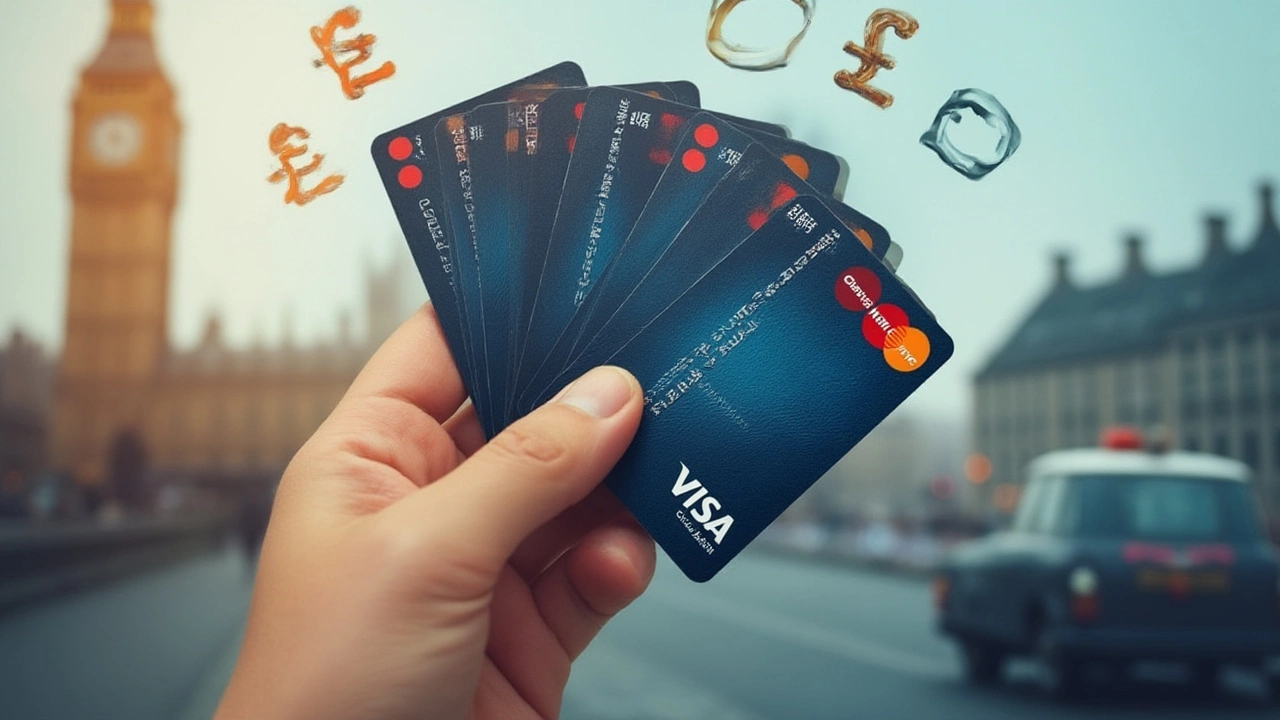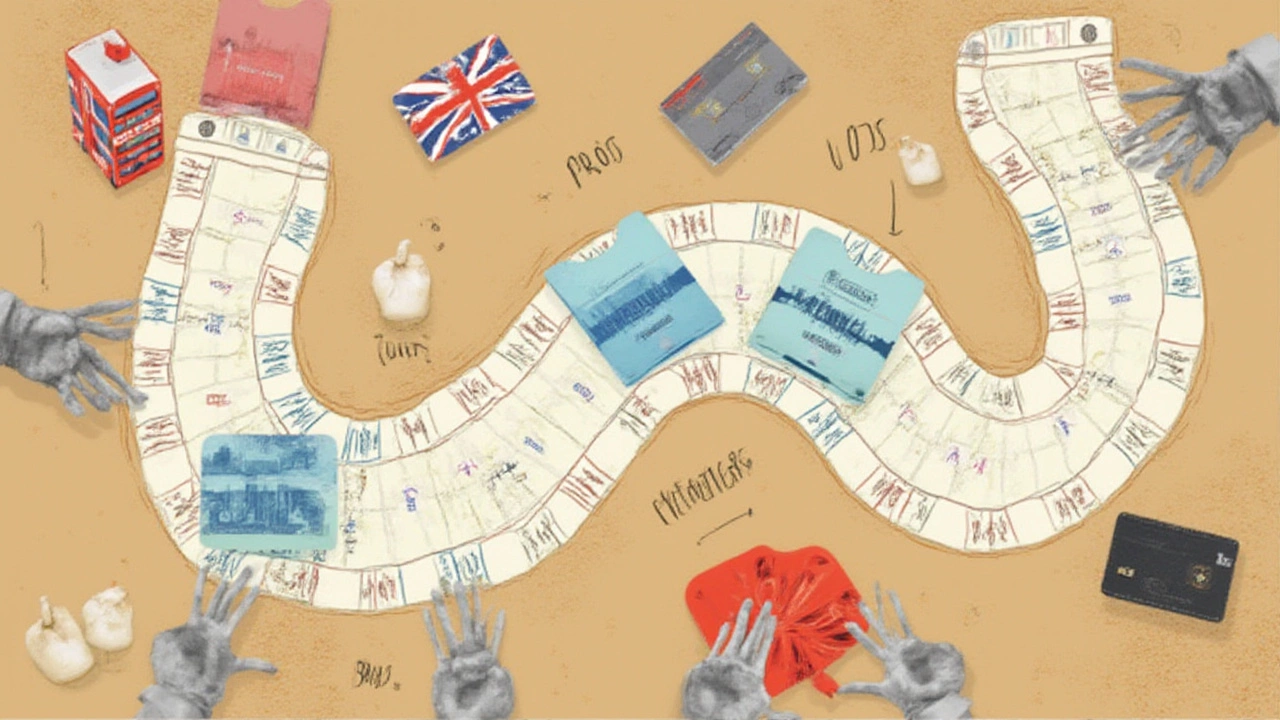Is Capital One Card Good? Review, Benefits, and What to Watch Out For
 Jul, 9 2025
Jul, 9 2025
Plenty of people get their first credit card with Capital One. Flashy ads, quick approvals, and plenty of card choices can make it feel like everyone’s in on the action. But does that actually make Capital One cards good? Or are you just stepping into a world of fine print? If you’ve ever had a wallet so packed you could barely sit down, you know finding the right card can be a mess. Let’s rip the Band-Aid off and give these cards a real, honest look.
What Capital One Offers (and Who It’s For)
Capital One isn’t shy when it comes to variety. They’ve got cards for nearly every kind of person—from absolute beginners with no credit to folks who run thousands a month through their accounts, and even kids starting to learn about money. Here’s what makes them an interesting player:
For people who are just starting to build credit, the lineup includes the QuicksilverOne, SavorOne, Platinum, and classic Secured cards. You might not get a huge limit out of the gate, but you can apply with fair credit or even no credit at all. Their secured card is often used for people rebuilding after a rough patch—think bankruptcy or collections. What sets it apart is that it usually graduates to an unsecured card if your payments are on time for several months.
Rewards? Yep, that’s a big draw. Whether you’re pumping gas or buying groceries for a growing family like mine, you’ll see those cash back percentages stacking up. The Savor cards, for example, give you up to 4% back on dining and entertainment. Not bad if you spend a chunk on Friday night pizzas or movie outings. BankRate reviewed these cards and said,
“For people who value simple, no-fuss rewards, Capital One’s program strikes a good balance between value and flexibility.”That’s really the experience—no jumping through hoops, no confusing tiers, just straightforward rewards.
Travel perks are another angle. The Venture and Venture X cards are all about earning miles to wipe out travel expenses. You can transfer those miles to a bunch of airline and hotel partners. This isn’t as rich as something like the Chase Sapphire Preferred, but it’s a clean, easy option if you don’t want to memorize a bunch of complicated rules.
Kids and teens? Check out the Money Teen Checking account, which comes with a card and plenty of parental controls. I actually opened one for my son Everett, and it made it a lot less stressful to teach him about responsible spending and what happens when the balance hits zero. The mobile app pings your phone when a purchase happens—peace of mind if you’re anxious about turning your kid loose with plastic.
Mobile banking is a serious selling point. The Capital One app is consistently rated high for its ease of use, instant card lock, and spending summarization. You can even generate virtual cards for safer online purchases.
For business users, accounts like the Spark Cash Plus or Spark Miles cards give straightforward cash back or travel points without caps. Great for freelancers or part-timers wanting to separate business and personal expenses. You’ll get free employee cards, integration with tools like QuickBooks, and year-end summaries.
The bottom line? No single card does it all, but Capital One offers something for almost everyone—whether you’re looking to get started, earn on everyday spending, or keep travel plans affordable.

How Capital One Cards Stack Up On Fees, Credit Checks, and Security
Now for the stuff that gets tucked in the small print: fees, interest rates, credit pulls, and security features. A lot of people apply after seeing a credit card offer in the mail, but they miss the details about what it actually costs to carry a Capital One card.
Annual fees vary from zero up to $395—for example, the Venture X, which targets frequent travelers. But many cards, especially entry-level and cash back options, have no annual fee at all. If you’re someone who tends to leave a balance each month, watch out for the APR: most regular cards run between 19% and 29%. Even a quick slip with a big purchase can spiral into hundreds in interest in just a few billing cycles.
One thing Capital One is actually a leader on is foreign transaction fees. Most of their cards—yes, even several no-annual-fee ones—don’t charge you extra to use your card abroad. It’s a huge win if you travel or shop on global websites.
What about credit checks? Here’s something most people don’t realize: when you apply, Capital One nearly always pulls from all three credit bureaus (Experian, Equifax, TransUnion). This is called a “triple pull.” If you’re rebuilding credit or applying for several cards, that can ding your score a bit more than a single inquiry. Their pre-qualification tool is a safe way to see your odds without a hard inquiry, though.
Security is another biggie. Every card comes with zero liability for fraud, EMV chip technology, and instant purchase alerts. If your card gets lost or you spot something weird, you can lock the card right from the app. They also push credit score monitoring as a free perk, so you can keep tabs on your credit changes each month.
Capital One’s customer service gets average grades. The online app and chat are fast, but real people can take time to reach, especially during busy periods. Some people rave about quick resolutions. Others…not so much. It’s probably fair to say it’s just as hit-or-miss as any big bank.
A final note on rewards: Some people are surprised to find their redemption options are pretty open. You can swipe your cash back right into your bank account, use it to pay statements, or even use it for Amazon.com purchases. Miles from the Venture cards? Take them as statement credits for travel, or move them to partners like Air Canada, British Airways, or Choice Hotels. Just remember: point values can slide around when transferring.
To sum up this section, Capital One cards are pretty fee-friendly (especially for travelers), the “triple pull” can sting your score a bit, and the security features are as strong as you’ll find anywhere.

Tips, Pitfalls, and How to Get the Most Value From a Capital One Card
The list of people burned by sneaky credit card terms is long. But you can dodge a lot of the bad stuff—and squeeze extra benefits—by knowing a few key strategies specific to Capital One.
First thing: use their free pre-approval tool. Especially if your credit’s still growing (like most of us at some point), you’ll see realistic odds and card matches without hurting your FICO score. The rates and limits they show are often what you’ll actually get if you apply—no surprises.
If you’re aiming to build credit, remember that Capital One reports to all three bureaus every month. That’s good news—on-time payments show up everywhere and can boost your score faster than cards that only report to one or two. Use the card each month for little things (think gas or groceries) and pay it all off. Over time, your limit usually goes up—sometimes automatically after a few months. My son Everett saw his secured card limit grow just for making all payments on time.
With rewards, don’t assume “more categories” mean “more money.” For most families, simple flat-rate cards like Quicksilver (1.5% back on everything) really add up and are easier to manage. If you do spend a lot on dining or entertainment, use a Savor card and stack those 3%-4% returns. Just don’t forget: you only earn rewards when you pay your full statement. Carry a balance, pay interest, and your cash-back gains are wiped out fast.
The virtual card feature is underrated. It lets you generate separate card numbers for online merchants. If a site gets hacked, your main account is safe. Handy for parents managing kid payments or for signing up for tricky trial subscriptions.
Beware of the “triple credit pull” if you’re planning big financial moves—like applying for a mortgage soon. Spread out your applications and keep tabs on your score. After a year or two of good habits, you can always look at product changes with Capital One to upgrade cards, keep your account history, and possibly snag better rates or rewards.
If you’re traveling, take advantage of airport lounge access (Venture X card), no foreign transaction fees, and free travel accident insurance. For many people, just two or three trips cover the fee. But if you’re rooted at home all year, those perks might not be worth it.
Watch for sign-up bonuses. They change often, but sometimes you can grab $200 or more for hitting a spending target in the first three months. Easy money if you have a big expense like tires, home repairs, or back-to-school shopping coming up.
And don’t be shy about leveraging Capital One’s customer support and credit monitoring tools. They’ll give you early warnings if your info shows up on the dark web or if your score drops sharply. That’s peace of mind you don’t often get for free.
To really get the most from a Capital One card, keep your eyes open for rate hikes, pay off balances in full, and update your personal details if your life situation changes (like moving or changing jobs). Loyalty can pay off here—longstanding accounts help your score and can make you eligible for occasional “upgrade” offers without another credit pull.
So, is a Capital One card good? For a wide range of people—especially if you like simple rewards, need to build credit, or want no-hassle travel options—the answer is yes. But, like everything in life, read the fine print, know your habits, and pick the card that actually fits your own wallet—not just what’s trending on TikTok. Credit’s a journey, not a sprint, and Capital One gives you plenty of lanes to run in.
